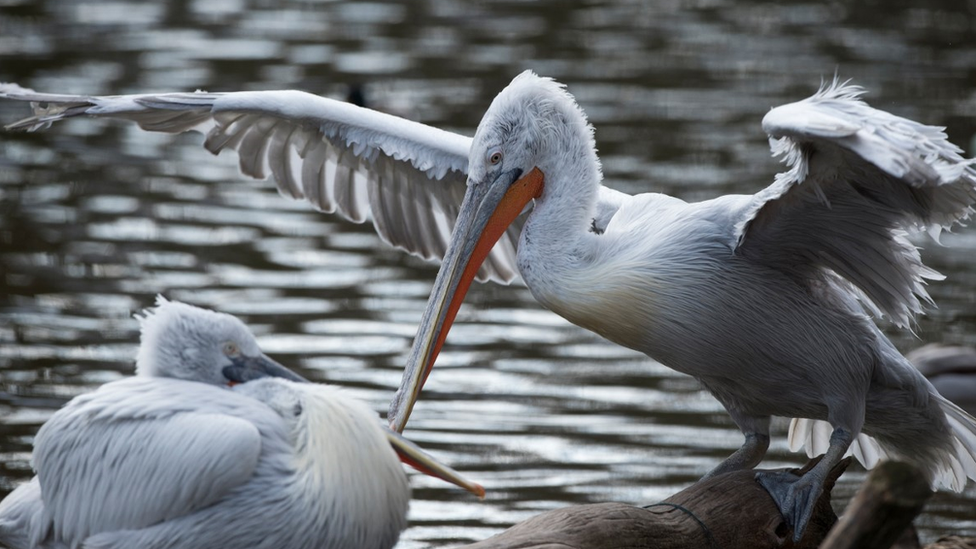Dalmatian pelicans: The UK’s biggest bird could be making a comeback
- Published
- comments

How much do you know about Dalmatian pelicans?
Well, they're Britain's biggest ever bird and fossils show that they first lived around around wetlands here thousands of years ago.
But Dalmatian pelicans haven't been wild in the UK since medieval times when people started to drain swamps, bogs and lakes to farm the land, but they could be about to make a comeback.
The Wildlife Trusts conservation charity is calling for the government to restore wetlands under new re-wilding plans, which means letting some areas return to a natural state, without human interference, so that plants and animals can call it home again.
Re-wilding these birds was an idea first suggested by bird expert, Ben Macdonald.
Ben, and other experts believe that if Dalmatian pelicans did return to parts of the country they would not only support the growth of their own endangered species in the wild, but also a wider ecosystem for other protected creatures, like fish and plant life.
The Dalmatian Pelican is the largest bird ever to have darkened British skies, and its restoration to the UK is, in my mind, no different from restoring the Mona Lisa to the Louvre, had it been stolen centuries before... Over time, the sight of pelicans will become no different to that of eagles or cranes over British skies, as indeed it is not for coast-living Australians or Americans.
Nikki Williams, Director of Campaigns and Policy at The Wildlife Trusts said: "Pelicans soaring over marshlands would be a fantastic sight - but first we need more, bigger, better wetlands. We want to see the return of species that were once common but before this can be done we must ensure there's plenty of the right sort of wild habitat first."
So perhaps one day in the future children in the UK could join children in other parts of Europe, Asia and Australia who are able look up and see these huge birds soaring through the sky.
Thought to be the world's largest freshwater bird, they live in swamps, lakes and rivers
They can grow to almost 6 foot in height!
They have a wingspan of over 3.5 metres. That's about the width of a small car!
Like swans, they mate for life with one partner
They scoop up fish in their huge bills, filtering out the water and swallowing around 1.2kg of fish on a good hunting day.
There are only around 3,500 breeding pairs left in the wild, according to biologists.
Some other UK animals returning to the wild
Did you know? Knapdale, the Tay and the Otter are the only places in the UK with wild, free-ranging beavers. The species has also been introduced to Kent, Essex and the Forest of Dean, but these populations are kept in large, fenced enclosures.
Two beavers, named Dragonfly and Glen, have been released on a Cumbrian country estate as part of a five-year scientific trial.
The aim is to find out the impact of beavers in an upland environment, in particular on a stream in a farmed landscape.
The animals, which were hunted to extinction in the UK in the 16th Century, have been homed in a 27-acre enclosure at Lowther Estate, near Penrith.
Young white-tailed eagles have been exploring from their Isle of Wight base
Britain's largest bird of prey has also returned to England's skies for the first time in 240 years!
White-tailed eagles were once a common sight across southern England until the 18th century when they were hunted to extinction.
The last record of anyone seeing one of the eagles in England was in 1780 at Culver Cliff on the Isle of Wight. They became extinct in the whole of the UK in 1918.
